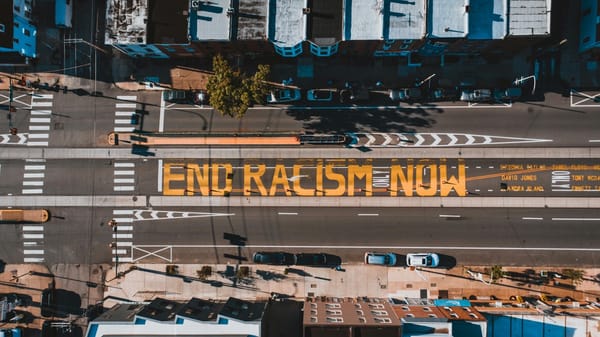The UK’s In-Work Poverty Shows That Wage Stagnation Is a Racial Issue
With living costs rising and wages falling in real terms, communities of colour are once again bearing the brunt of it.

Access the Audio Read version of this article directly on Spotify for Podcasters.
"Rather than focusing on how workers can ‘hack the system’ and train themselves to mimic those who have held them down in unconscionable conditions for so long, maybe it’s time these spaces changed themselves."
It’s an issue that’s come to the fore in the face of the coronavirus crisis: almost 700,000 more people* in the UK have been driven into poverty over the last year, including 120,000 children. Images of tuna in moneybags, quartered peppers and a thumb’s length of wizened carrot took social media by force just months ago, exposing the government’s failure to adequately provide free school meals for many of those eligible children.
In-work poverty is on the rise across the country. Last year, the Guardian reported that about 56% of people* living in poverty in 2018 were in a household where at least one person had a job. Just 20 years beforehand, the number was 39%.
But how is it possible that so many are falling below the breadline despite working? Since 1999, average wages across the UK have increased by less than a third. Meanwhile, average house prices have almost tripled, according to SwiftMoney.
Evidently, despite the British TV-watching public’s voyeuristic obsession with the archetype of The Benefits Scrounger, the truth is far from it. In more recent years, particularly since the EU referendum in 2016, this image has become wound up with one of swarms of immigrants forming itself into the UK’s public enemy number one.
As it happens so often in the UK, the high levels of in-work poverty have disproportionately affected communities of colour. Although rates do vary between different ethnic groups, they remain far more likely to be living in in-work poverty in comparison to their white British counterparts. According to the Joseph Rowntree Foundation, in families where at least one adult is in paid work, “around 60% of Bangladeshis, 40% of Pakistanis and 30% of Black Africans are in income poverty”.
Despite talk of a ‘liberal metropolitan elite’ amid calls for decentralisation, city life also holds a very different meaning, depending on the colour of one’s skin. Kensington and Chelsea, the inner city borough known for beautiful white architecture and lush green gardens, is a prime example of that. In some parts of the borough, average incomes can “drop 10 times as you cross a street”*. 70% of those in income poverty in inner London are from minority ethnic groups, as are 50% in outer London. This comes at a time when one in 10 Londoners hold assets worth more than £720,000, as reported by The Guardian.
Evidently, inequality (both racial and financial) is woven into the very fabric of our society. So why is it that there remains such a strong link between ethnicity and poverty?
The Joseph Rowntree Foundation puts it down to a combination of exclusive workplace cultures, little chance for progression in low-paid roles (within which people of colour are overrepresented) and a lack of understanding within communities. Whilst it’s true that communities of colour of impoverished, working class backgrounds might be less at ease in professional workspaces, that it’s framed in a way where solutions are geared towards changing behaviour of employees is greatly telling.
Rather than focusing on how workers can ‘hack the system’ and train themselves to mimic those who have held them down in unconscionable conditions for so long, maybe it’s time these spaces changed themselves. Accessibility should be upheld under any conditions, whether that’s to champion people of colour, disabled workers, LGBTQ+ workers, or more. Offering the tools to work into a system isn’t enough when the system’s prior performances demonstrate that something deep at its core lies broken.
As many job hunters and recruiters will know, there’s a growing legion of companies offering convenient ‘diversity schemes’, particularly those in glossy glass-and-steel high rises with purpose-made PR machines and manufactured manifestoes of ‘corporate responsibility. But what happens to the many members of marginalised communities in blue collar occupations?
One thing remains clear: in order for there to be any true steps taken towards racial equality in this country, economic policy must form a vital part of the anti-racist movement. So long as material outcomes and living standards for racialised communities consistently fall behind those of their white counterparts, there is not enough being done to structurally change this country’s institutions for the better.
*Source: The Guardian





